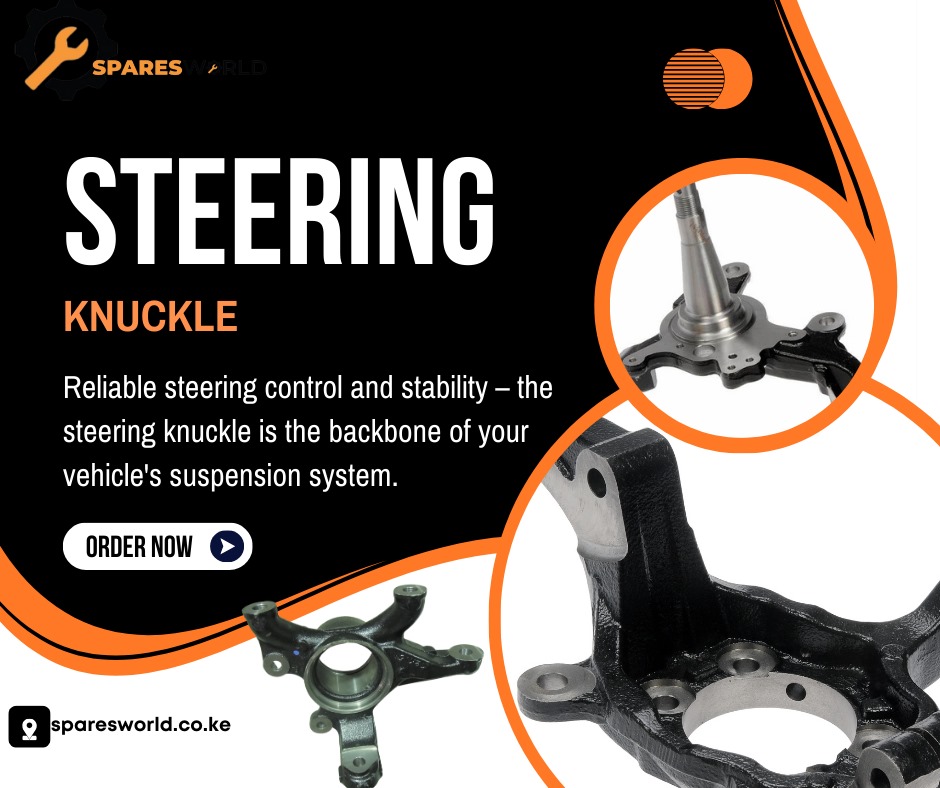Signs Your Steering Knuckle Needs Replacement

The warning signs that your car's steering knuckle may be failing and why timely replacement is crucial for road safety.
The Role of the Steering Knuckle in Vehicle Safety
The steering knuckle is a critical component in your vehicle's suspension system. It connects the wheel hub to the suspension, allowing for controlled steering and smooth handling. Without a functioning steering knuckle, your vehicle's ability to navigate turns and maintain stability on the road would be severely compromised.
In addition to steering, the knuckle plays a key role in supporting the weight of the vehicle and absorbing impacts from the road. This makes it indispensable for both safety and comfort. Any damage to this component can lead to significant issues, affecting not only your driving experience but also your overall safety.
Unusual Noises: The First Warning Sign of Steering Knuckle Damage
One of the earliest signs that your steering knuckle may be in trouble is the presence of unusual noises. If you hear clunking, knocking, or grinding sounds when turning the steering wheel, it could indicate a problem with the steering knuckle or its associated components.
These noises are often a result of worn-out or damaged parts within the steering and suspension system. Ignoring these sounds can lead to more severe damage and higher repair costs down the line. Therefore, it's crucial to address these noises promptly to ensure your vehicle remains safe to drive.
Steering Difficulties and Vehicle Pulling: Symptoms of Compromised Integrity
If you find that your vehicle is pulling to one side or you are experiencing difficulty steering, this could be a sign that your steering knuckle is compromised. Difficulty in maintaining a straight line or excessive effort required to turn the steering wheel are strong indicators of underlying issues.
These symptoms not only make driving more challenging but also increase the risk of accidents. A compromised steering knuckle can lead to uneven tire wear, further exacerbating the problem and making timely replacement essential for maintaining vehicle control and safety.
Visible Wear and Damage: Identifying Physical Signs
In some cases, you may be able to visually inspect the steering knuckle for signs of wear or damage. Look for cracks, bends, or other deformities in the knuckle itself. Additionally, check for excessive rust or corrosion that could weaken the component over time.
Physical damage to the steering knuckle is a clear indication that replacement is necessary. Ignoring these visible signs can lead to catastrophic failure, putting you and other road users at risk. Regular inspections can help identify these issues early, allowing for timely intervention.
The Impact of Delaying Steering Knuckle Replacement
Delaying the replacement of a damaged steering knuckle can have serious consequences. Not only does it compromise your vehicle's handling and safety, but it can also lead to further damage to other suspension and steering components.
Over time, this can result in higher repair costs and increased downtime for your vehicle. More importantly, driving with a compromised steering knuckle increases the risk of accidents, endangering both you and other road users. Timely replacement is crucial to maintain the safety and performance of your vehicle.

 Loading..
Loading..